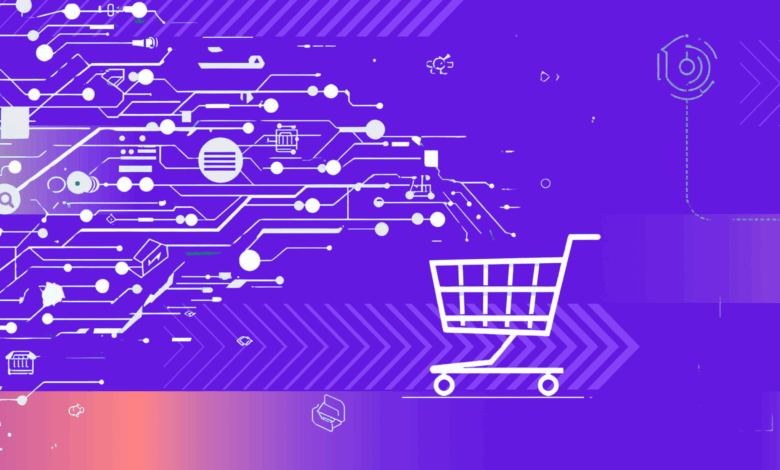
AI-powered experiences are rapidly reshaping the online retail experience. From intelligent chatbots to personalized product recommendations, eCommerce brands are moving fast to bring the promise of generative AI to their digital storefronts.
But in the race to deploy new functionality, many retailers are running headfirst into an old enemy: slow site performance.
The consequence? Shoppers bounce. Conversion rates drop. Revenue suffers.
In this article, we’ll explore how brands can embrace AI-driven experiences like chat-enabled product detail pages (PDPs) without jeopardizing page speed, SEO, or user trust — and how to avoid common pitfalls when integrating large language models (LLMs) into eCommerce sites.
The Hidden Cost of AI Widgets
One of the hottest trends right now is what we’re calling ChatPDP: a product detail page enhanced with an embedded LLM-powered chatbot. These widgets aim to answer customer questions in real-time: sizing, shipping, material specs, and more.
At their best, they reduce support tickets and enhance buyer confidence. But at their worst, they can block rendering, delay first paint, and cause layout shifts that frustrate mobile users.
This performance tax happens when third-party scripts — like the JavaScript powering an AI chat — are loaded early in the page load lifecycle and block essential content. It’s an expensive trade off; even small delays in page load time can result in lost sales and frustrated customers..
In many current implementations, AI chat widgets are introduced using high-priority script tags that block the browser’s rendering process.
Here’s what that means in practice. The browser:
- Pauses HTML parsing
- Downloads the third-party AI library
- Executes the script before continuing to build the page
This delays the moment the user sees the most critical parts of the PDP –— product images, pricing, SKU options, and calls to action.
Even when the chatbot lives below the fold, its script can delay content above the fold. And because many users never scroll or interact with the bot, the performance hit goes unrewarded.
In eCommerce, this translates to real conversions and real dollars lost.
Performance Matters More Than Ever
Today’s eCommerce shoppers expect instant gratification. If product images, descriptions, reviews, or prices are delayed by even a few seconds, the shopper may abandon the page entirely.
Site performance doesn’t just affect bounce rates — it impacts organic search rankings, user satisfaction, and conversion. In a world where customer acquisition costs are soaring, no retailer can afford to waste the traffic they’ve earned.
AI features must be implemented with the same rigor as any core eCommerce element: they should load efficiently, intentionally, and only when needed.
How to Integrate AI Without Slowing Down
There are several performance-friendly techniques developers can use to embed AI-driven features on PDPs. These are vendor-neutral and broadly applicable to any LLM implementation:
1. Defer or Async the Script
Adding async or defer attributes to your <script> tags allows the browser to download and/or execute scripts without blocking the rest of the page load lifecycle. While async allows parallel download, defer is often better for chat widgets, since it waits until HTML parsing is complete to run the script. MDN Web Docs explains how these attributes help avoid performance bottlenecks.
2. Use Lazy Loading on User Interaction
The best pattern for AI chat tools is to load them only when needed — for example, when the user clicks a help icon or focuses on a chat input field.
This strategy, called loading a façade, is used by leading brands. For instance, Indochino only loads its Zendesk chat when a user clicks the support bubble. A similar approach can be applied to AI-driven chat widgets, keeping initial page load lean and fast.
3. Pre-Render the Interface, Not the Logic
You can design the chat input box and UI in HTML and CSS without loading the AI logic up front. If the user begins typing or engages the widget, the underlying LLM scripts can be fetched in the background — even prefetching the response as the user types.
This “progressive hydration” approach provides the illusion of speed while conserving bandwidth and improving core web vitals.
4. Avoid Layout Shifts (CLS)
Another common UX issue with chatbot embeds is unexpected content shifts. As the AI panel loads or expands, it may push other elements around, triggering layout instability.
To avoid this, pre-allocate space for the widget and use scrollable panels rather than dynamic height changes. This helps maintain a stable layout and supports a better mobile experience — an important consideration, since most eCommerce traffic is now mobile-first.
Google’s web.dev provides guidance on preventing cumulative layout shift (CLS), a key Core Web Vitals metric.
Experiment Off-Season, Not During Black Friday
Many retailers have rushed ChatPDPs to market over the past year — only to quietly remove them after seeing negative performance impact or low engagement.
The reason? They often launched features without adequate A/B testing or performance baselines. Others likely lost experiments due to conversion regression during peak traffic.
To avoid these issues, brands should test AI features well ahead of the holiday season.
Experiment with:
- Load time differences between deferred vs. render-blocking AI
- Engagement rates on chat widgets
- Conversion impact with and without AI features
As Baymard Institute often reminds us, even small performance regressions on PDPs can have disproportionate impact on revenue at scale.
AI Should Improve, Not Impede, the Customer Experience
Retailers are right to be excited about the power of AI. Generative language models offer new ways to personalize and engage, but they must be implemented responsibly.
The right question isn’t “How do we get LLMs on our site?”
It’s: “How do we ensure AI helps — and never hurts — our shopper’s journey?”
That means loading AI functionality only when it’s relevant. Prioritizing page speed. Honoring the intent of each visitor. And avoiding flashy features that come at the cost of performance.
With smart loading strategies, brands can bring intelligence to the PDP without slowing it down.




